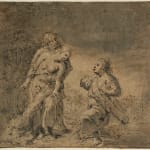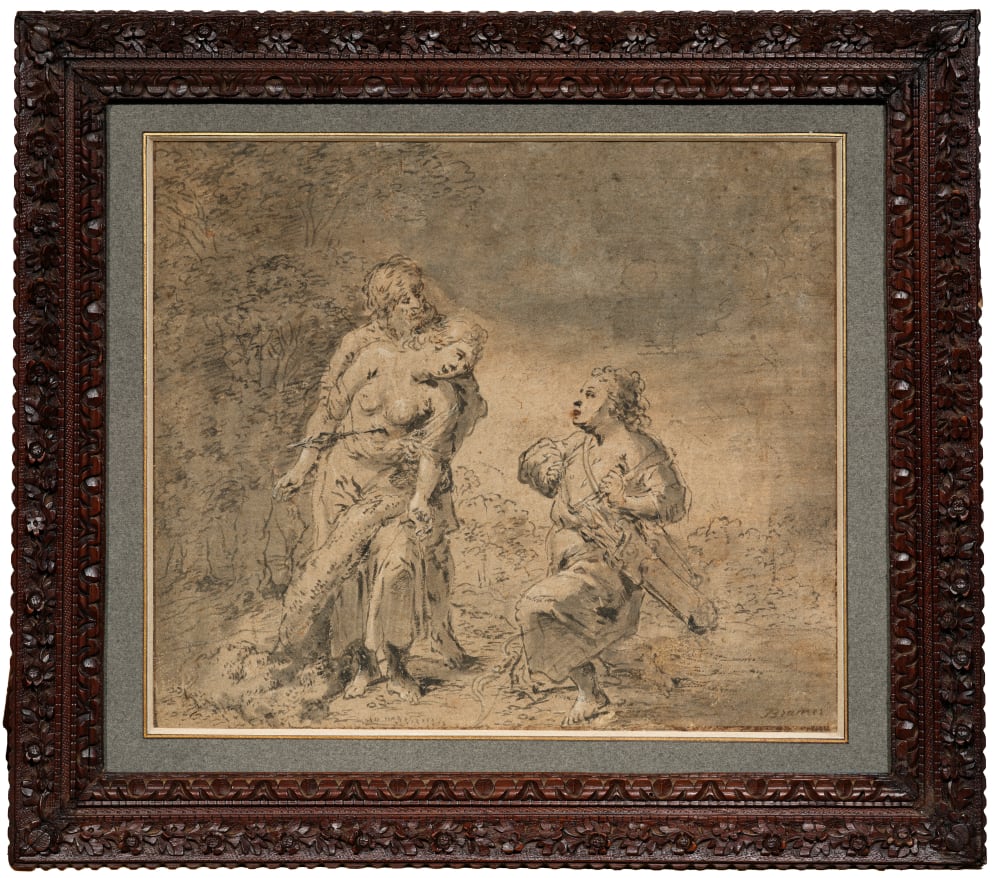 Signature detail
Signature detail
 Leonaert Bramer – The Blind Man's Bluff (INV 22531) Musée du Louvre
Leonaert Bramer – The Blind Man's Bluff (INV 22531) Musée du Louvre
 Louis Vallée - Silvio and the wounded Dorinda (2000.114.1) - National Gallery of Arts - Washington
Louis Vallée - Silvio and the wounded Dorinda (2000.114.1) - National Gallery of Arts - Washington
 Leonaert Bramer - The parents of Pyramus and Thisbe discovering the Corpses of their Children - RF 1987 7 Musée du Louvre
Leonaert Bramer - The parents of Pyramus and Thisbe discovering the Corpses of their Children - RF 1987 7 Musée du Louvre
Leonaert Bramer
19 x 22.5 cm
Further images
-
(View a larger image of thumbnail 1
)

-
(View a larger image of thumbnail 2
)

-
(View a larger image of thumbnail 3
)

-
(View a larger image of thumbnail 4
)

-
(View a larger image of thumbnail 5
)

-
(View a larger image of thumbnail 6
)

-
(View a larger image of thumbnail 7
)

-
(View a larger image of thumbnail 8
)

-
(View a larger image of thumbnail 9
)

This finely executed drawing in pen and wash is typical of the work of Leonaert Bramer, one of the most fascinating yet little-known artists of 17th-century Holland.
In a nocturnal atmosphere typical of the artist's productions (which earned him the nickname Leonardo delle Notti - Leonardo of the Nights - during his long stay in Italy between 1616 and 1627), Bramer presents a scene inspired by Battista Guarini's Pastor Fido. In despair at having mistaken the nymph Dorinda for a wild beast during a hunting party, and having pierced her with his javelin, Silvio offers her his heart as she lies in the arms of her faithful servant Linco.
1. Leonaert Bramer, an original artist of the Dutch Golden Age
Born in Delft in 1596, Leonaert Bramer set off at the age of 18 on a long journey to Italy, passing through Arras, Amiens, Paris, Aix-en-Provence and Marseille, where he embarked for Genoa and Livorno. He settled in Rome in 1616, where he became one of the founders of the group of Nordic artists known as the Bentvueghels. He stayed in Rome intermittently, visiting the main Italian cities as well. In Rome, he was involved in several street brawls, including a famous one in which Claude Lorrain - attempting to intervene - was injured, forcing him to leave the city in 1627.
He returned to Delft in 1628 and in 1629 became a member of the Guide de Saint Luc and the Garde Civile (schutterij). He was one of the few painters in the Netherlands to paint frescoes, which unfortunately have not been preserved. He undertook a second trip to Rome in 1648, before settling permanently in Delft, where he continued to paint extensively well into old age.
Bramer was obviously well acquainted with the greatest of his Delft contemporaries, Johannes Vermeer (1632 - 1675). In 1653, on his return from his second visit to Rome, he came to Vermeer's defense when his future mother-in-law, Maria Thins, tried to prevent him from marrying her daughter. It is likely that Bramer, and not Carel Fabritius, was Vermeer's teacher, even if the latter's style differs greatly from Bramer's.
Bramer's graphic work is very important[1] and a large proportion of his drawings are stand-alone works, executed independently of his pictorial production and intended for the art market or for commissions. His subjects are more in the Italian tradition than in that of the Netherlands: allegories, mythological, biblical or literary scenes dominate, while landscapes or genre scenes are rare.
The technique used for our drawing, combining pen and grey ink, grey wash and white gouache, can be found in many of the artist's drawings, such as the Blind Man’s Bluff in the Musée du Louvre, in which the treatment of the plant masses in the background is very similar.
As is often the case with Bramer, our drawing has been executed on a sheet of laid paper that was colored with an ochre preparation brushed or sponged over the entire surface, which brings out the dramatic character of the depicted scene.[2]
2. Drawing description
The story of Silvio and Dorinda is strongly inspired by that of Cephalus and Procris. It appears in the fourth act of Pastor Fido, a tragi-comedy published by Battista Guarini in Venice in 1590. Silvio is a young hunter with no interest in love. He is pursued by a nymph named Dorinda, who tries to win his love in many ways, but always without success. One day, Dorinda, seeking to observe Silvio as he hunts, disguises herself as a shepherd wearing wolf-skin clothing. After the hunt, she lies down to rest. From a distance, Silvio mistakes her for a wolf and shoots an arrow at her. After wounding Dorinda, Silvio finally awakens to love and offers his heart to Dorinda as she is carried by Linco, her faithful servant. This is the scene depicted here: Silvio is on his knees, opening his shirt to reveal his heart; Dorinda has let the wolf skin that covered her slip to her feet, and lies in Linco's arms, exchanging loving glances with Silvio.
Fortunately, Dorinda's wound turns out to be superficial, and our two lovers will marry on the very same day !
This theme was often depicted in Dutch art of the first half of the 17th century, as shown in the painting by Louis Vallée, a Dutch painter who died in Amsterdam in 1653, reproduced in the gallery.
To illustrate Bramer's original pictorial talent, we thought it would be interesting to compare our drawing with the Louvre painting Les Parents de Pyrame et de Thisbé découvrant les cadavres de leurs enfants (The Parents of Pyramus and Thisbe discovering the corpses of their children), whose theme is quite similar.
3. Framing
To frame this delicate, elegiac work, we have chosen a wooden frame meticulously carved with flowering scrolls that evoke, through the precision of their chasing, the small objects made from Saint Lucia wood (a type of wild cherry tree) produced in Lorraine in the 17th and 18th centuries.
Main bibliographical reference :
David Mandrella La pointe et l'ombre - Dessins nordiques du musée de Grenoble XVIe – XVIIIe siècle Somogy 2014
[1] Almost one thousand three hundred sheets by Bramer are known today.
[2] For example, the Musée de Grenoble holds a drawing of Jupiter and Amalthea's goat (MGD 674), also done on yellow-washed paper and dated circa 1655-1665.





